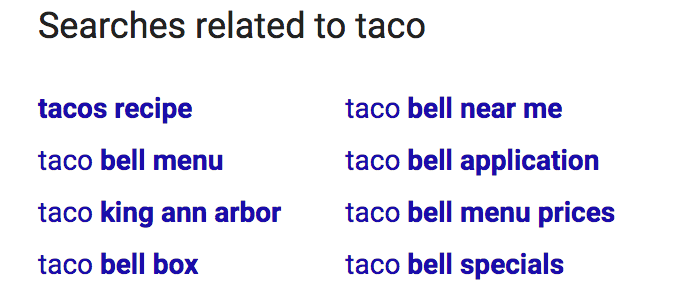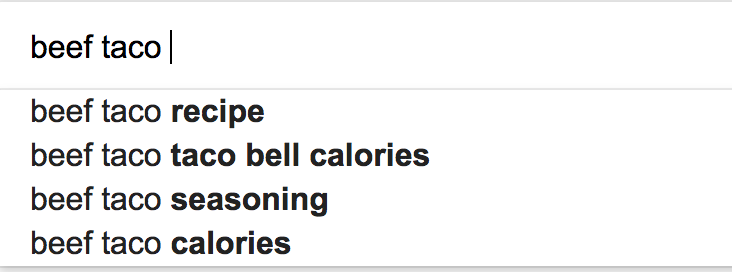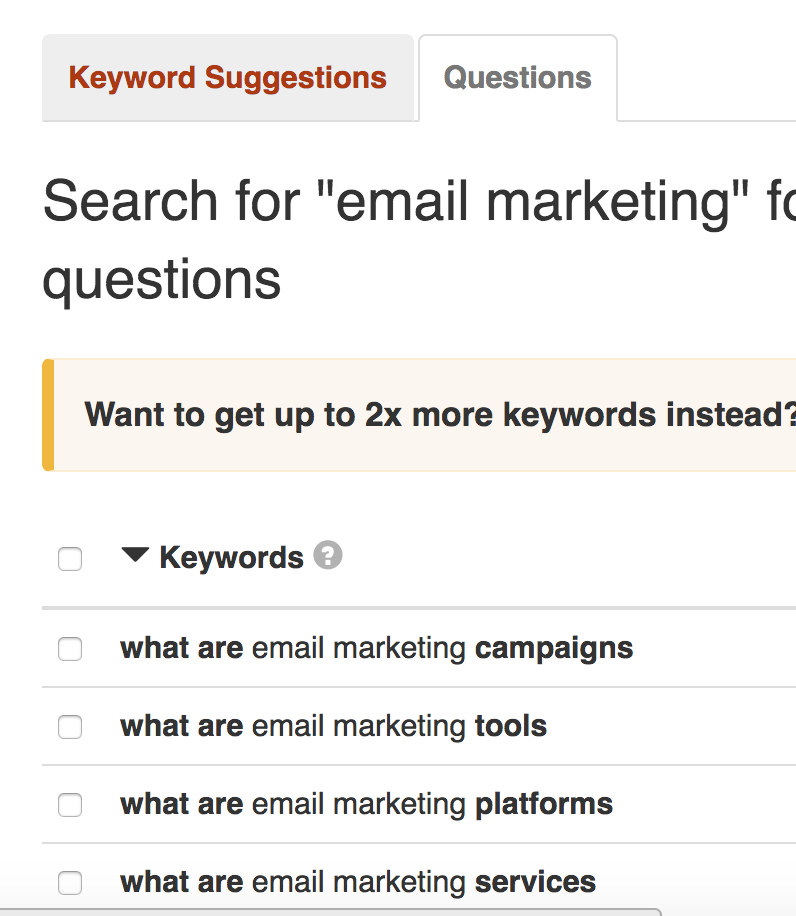
I’ve always liked puzzles. Crossword, jigsaw, sudoku — the process of bringing all of these separate pieces together to create something whole — has, for me, always been a fulfilling one.
This is probably one of the reasons I went into digital marketing. Email, social media, blogging, SEO — bringing all of these moving pieces together to form one cohesive strategy isn’t too far from a sodoku or a jigsaw puzzle.
But blogging itself isn’t a puzzle. It’s a recipe. And I absolutely hate cooking.
If you’re anything like me, you probably think that there is some secret strategy to blogging. That if you just put the words together in the right way, your blog post will suddenly take off, but that’s not the case.
Creating a successful blog post is more like baking a cake than solving a puzzle. You need to have all of the right ingredients, prepare them in the right way, bake your cake for the proper amount of time, and let it cool for a while.
Alright, enough with these analogies. You came to this post to learn how to start a blog, so let’s get to it!
If you’ve already started a blog and are just looking for tips on Keyword research and SEO, skip to step 3.
What is a blog?
Before we jump into the details of creating a successful blog for your business, let’s talk about what a blog is.
If you load up Google and search “What is a blog” you’ll get a generic, unhelpful definition, not unlike the following:”a regularly updated website or web page, typically one run by an individual or small group, that is written in an informal or conversational style.”
A more appropriate definition is simply: a tool. A blog is a digital marketing tool you can use to grow your business. It is a branch of your website that you use to answer customer questions, talk about your business, establish yourself as a thought leader in your industry, gain website authority, and boost your keyword rankings for relevant search terms.
How?
Well, let’s run through the steps of starting your blog.
1. Choosing the best blogging site
When starting a blog for your business, you’ll generally want to host it through the same platform that your site is on. For example, if your site is on WordPress, start your blog there. If, however, you would like to host your blog externally on your own servers and at your own domain, this post can help you compare some of the top hosting platforms.
When comparing platforms, here are few things you’ll want to keep in mind:
- How much design customization does a platform offer?
- Is the platform user-friendly for “less technical” individuals?
- Does the platform need to have any specific capabilities or offer any specific plugins?
- What is your budget?
If you ask yourself these four things, you should be able to narrow your options down considerably.
2. Knowing what to blog about
After choosing a blogging platform, you have to create content for your blog. Which means choosing what to write about. This can seem daunting, but it is actually a pretty simple process.
First, you need to identify the main things customers want from your business. This usually refers to the products and services you offer.
Let’s take a look at a small map I made for the content team here at MINDSCAPE.
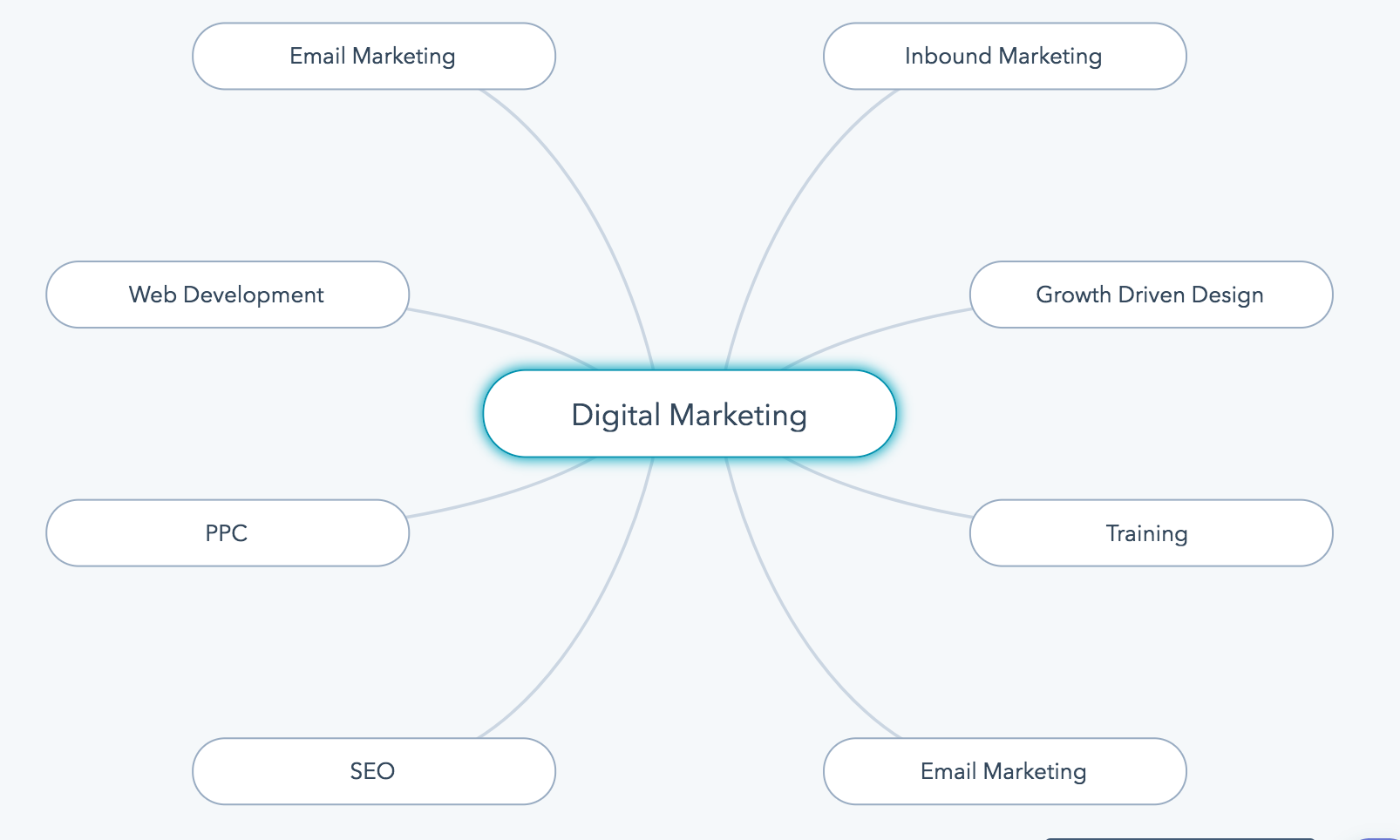
Being a digital marketing firm, we specialize in things like inbound marketing, growth-driven design, and digital marketing strategy. The main things customers come to us for are all aspects of digital marketing.
Let’s take a look at examples from a few other industries.
College Clothing Line
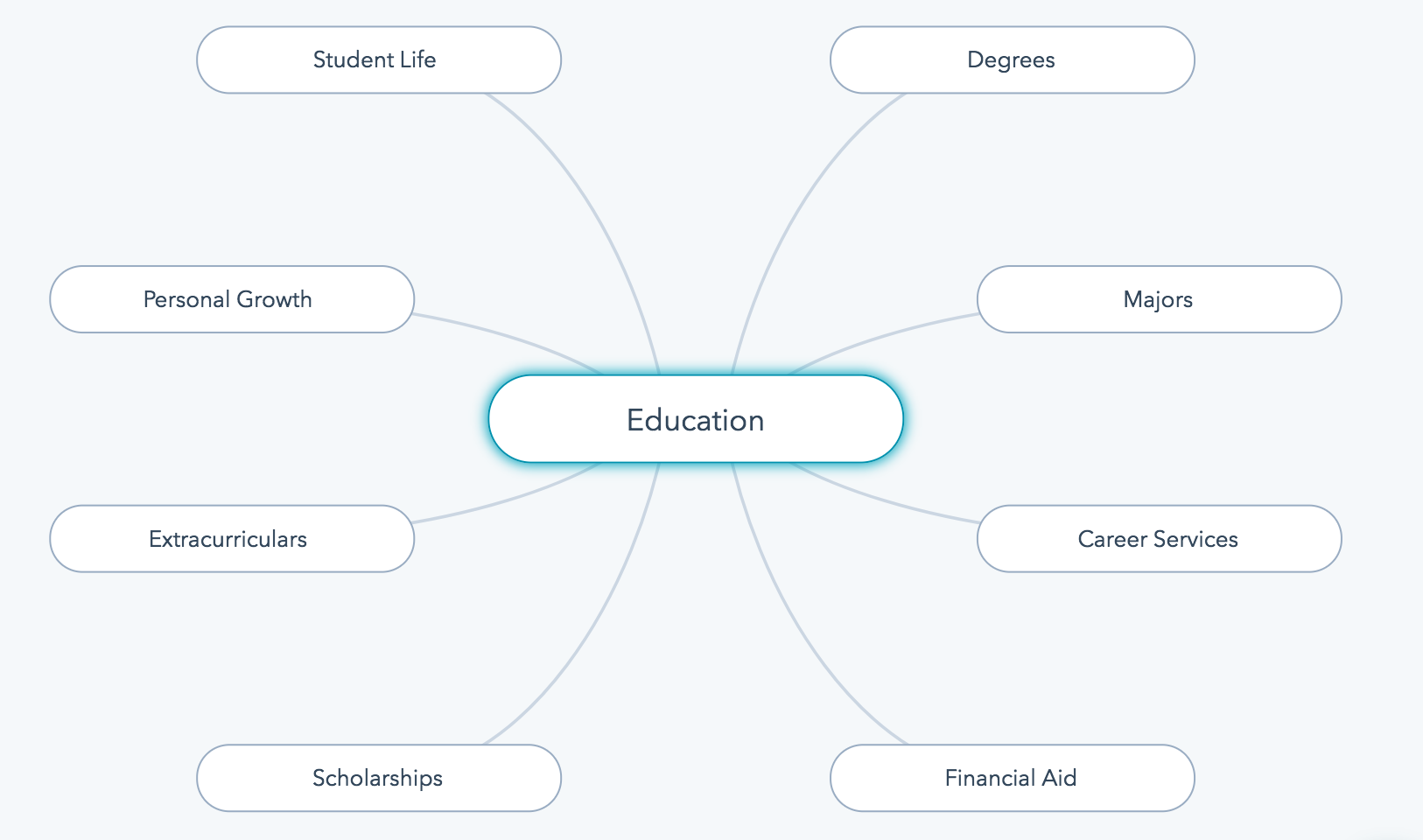
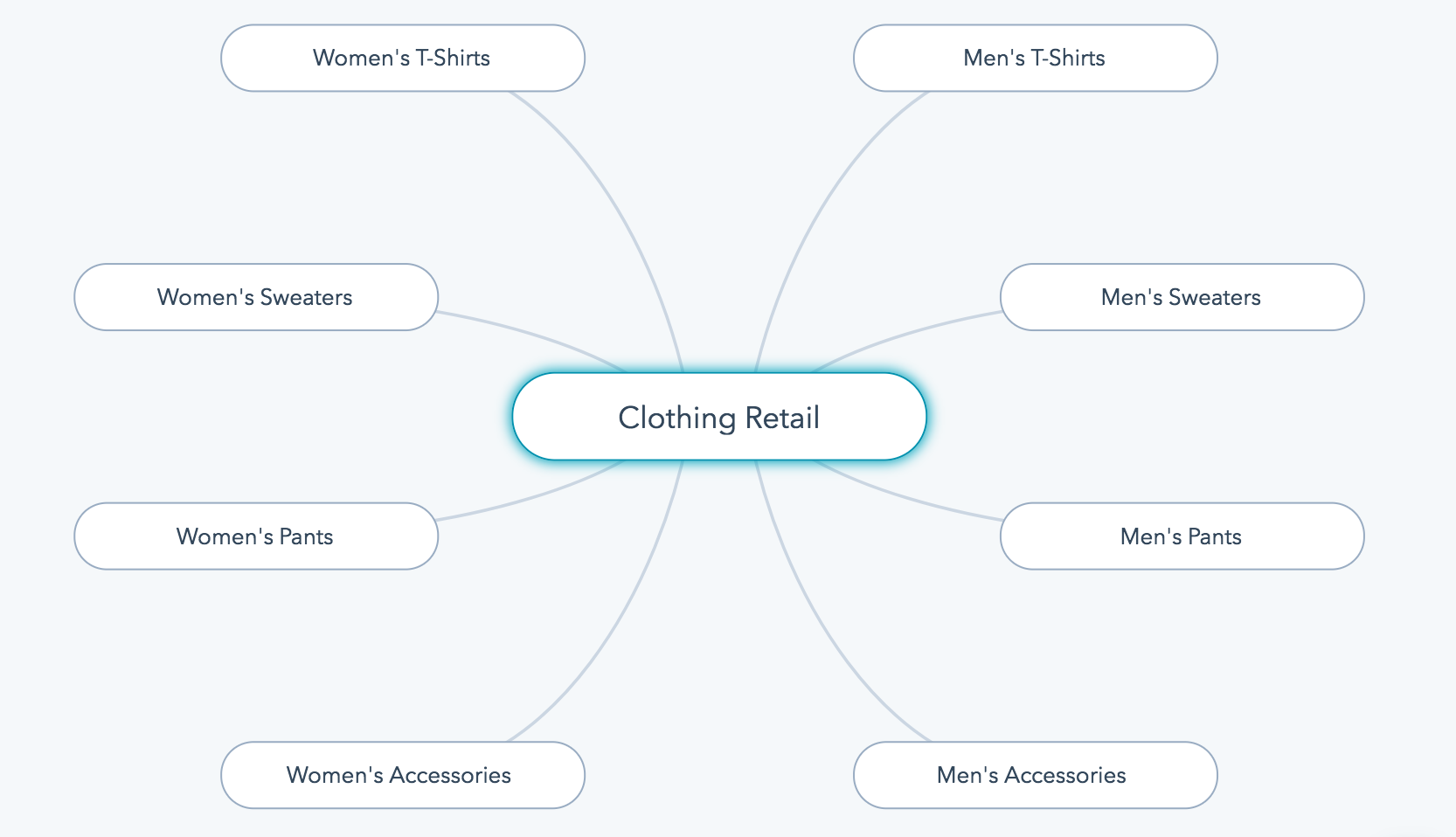
Restaurant
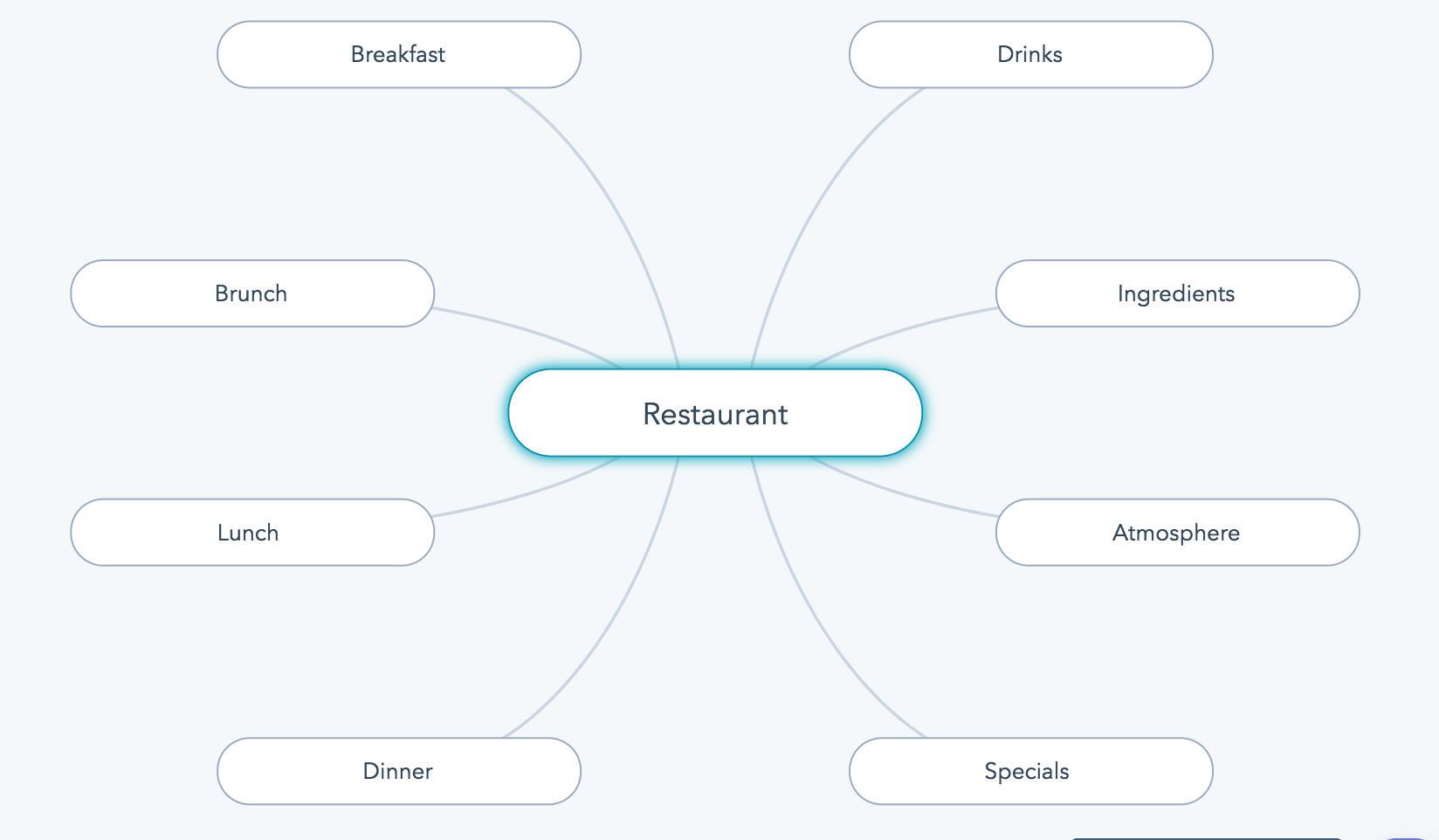
These products and services will serve as the primary pillars for your blog, so make sure these are the MAIN things that your business offers and in which customers have interest.
After you map out your main pillar topics (you can create your own map here or here), you’ll need to go a little deeper. What are the subtopics of these categories? What are customers interested in when it comes to these products or services? Let’s take another look at MINDSCAPE’s pillar topic “email marketing” to see what this breakdown might look like.
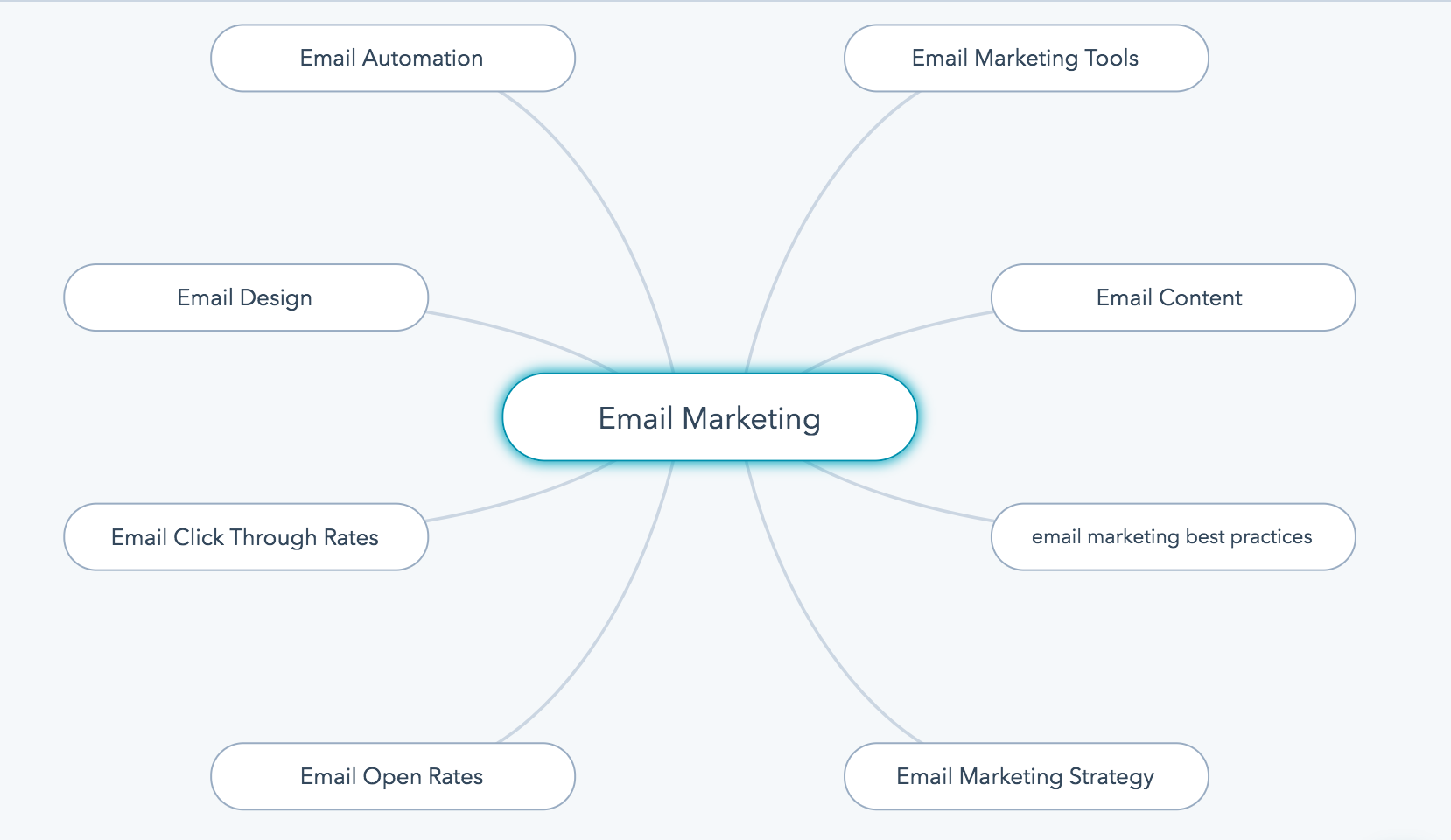
If you don’t know what your ideal buyers are interested in knowing about your products and services, it may be time to do some keyword research. Let’s take a look at how you can discover what words are being searched.
3. Integrating Keyword Research
Keyword research isn’t all that difficult if you have the right tools. I’m sure you have heard of Google Adwords: Keyword Planner. It is a keyword research tool that is free and incredibly easy to use. All you have to do is sign in to Google Adwords with your Gmail account, select “Tools” in the main navigation, and click “Keyword Planner.” After you do that you should be on this screen.
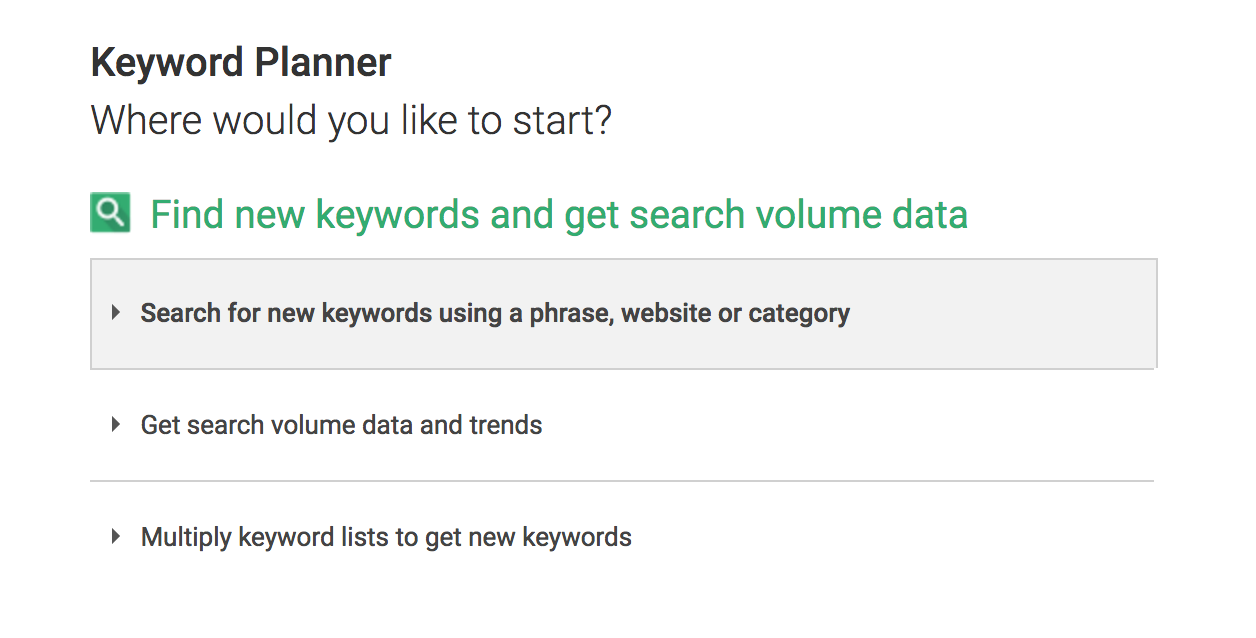
Select the first option: Search for new keywords using a phrase, website, or category. This will take you to the page below. Here you can type in a specific keyword or phrase and see related keywords and keyword phrases.
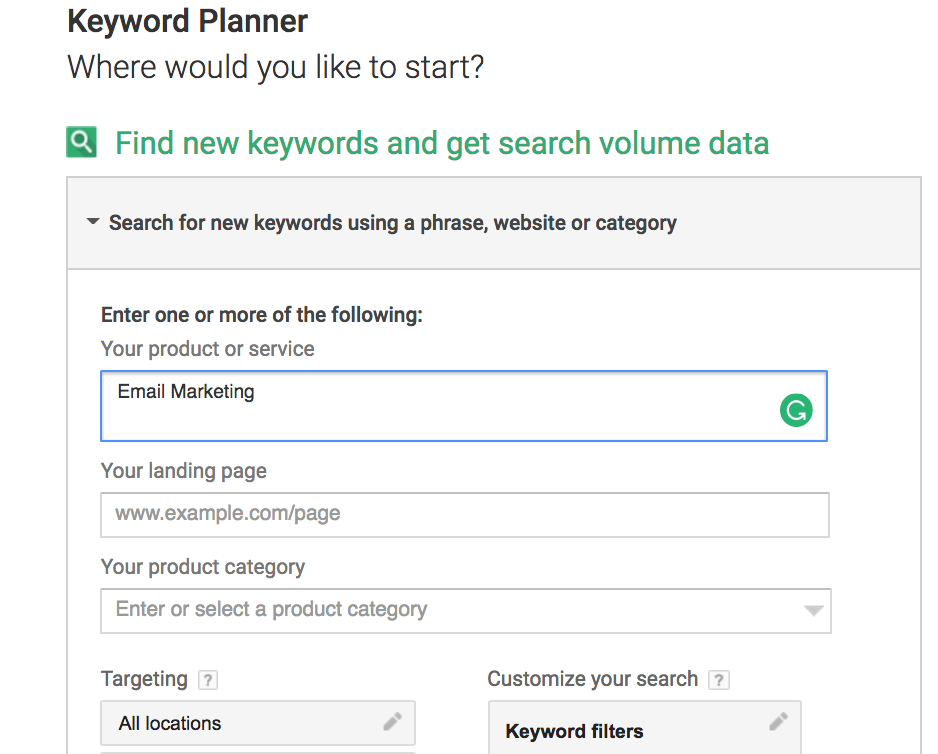
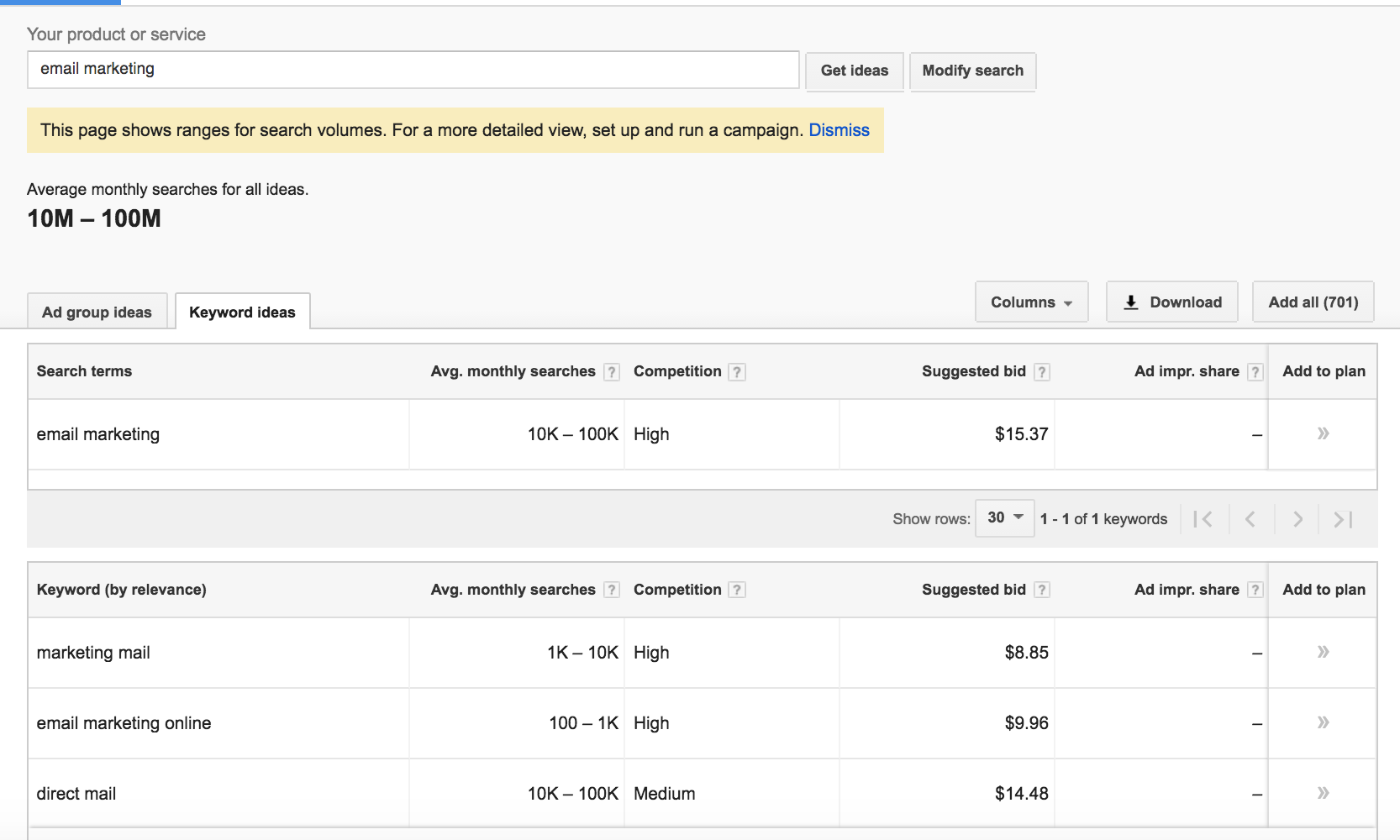
These keywords will help inform your subtopic decision, as well as give you ideas for specific blog post topics. Be sure to pay attention to the average monthly searches (the number of times a keyword is searched per month) and the competition (how hard it will be to rank for a specific keyword) for the best results.
4. Choosing Your Blog Topics
So now you know, what the pillar topic categories of your blog should be, what your subtopics should be, and how to use keyword research to help you come up with ideas. There are still, however, a few more things you can do to nail down a specific blog topic.
- Talk to your sales team. Your sales team should be able to provide you with a list of frequently asked questions they receive from customers. Answering these questions in blog posts can help you nurture future site visitors into leads before they even talk to a sales rep.
- Google search. You’re probably familiar with Google’s search suggestions and related searches from your own online activity. Let’s say you own a taco stand, and you want to write a post about your beef tacos. Go to Google and type in “taco.”


Based on the results you may choose to write a post entitled “Our Perfect Beef Taco Seasoning.” Or “Five Beef Taco Recipes You HAVE to Try.” - Keyword questions. Some keyword tools like this one have a “question” search result option after you type in your keyword. This will show you frequently searched questions related to your keyword.

5. Blogging SEO best practices
Once you have done all of your prep work, it is time to write some posts. I’m not (yet) a world-renowned author, so I won’t tell you how to write, but on our site we cover blogging often, so we have posts that can give you some useful guidance as you begin blogging.
https://www.wearemindscape.com/resources/9-tools-every-blogger-needs
https://www.wearemindscape.com/resources/blog-storytelling-why-informative-writing-isnt-enough
https://www.wearemindscape.com/resources/what-a-road-trip-taught-me-about-content-writing
https://www.wearemindscape.com/resources/google-analytics-a-map-to-guide-your-blogging
https://www.wearemindscape.com/resources/content-creation-tips-tools-for-brainstorming
When it comes to SEO and blogging, the following three recommendations are considered best practices:
- Include your focus keywords in the [1] title of your post, [2] the subheadings, [3] the URL, [4] the meta description, and [5] the image alt text.
- Link to high-quality external sources that are recognized in your category. (For example, MailChimp or Litmus if your topic is email marketing.)
- Link to the page on your website that you want to rank for your focus keyword. The relationship between a blog post and a service or product page is symbiotic: they can help — or hurt — each other.
For a more in depth look into blogging SEO have a look at this post from Hubspot.
You’re not done yet!
Your blog can only do so much work on its own. Call-to-actions, content offers, social promotion – they all play a role in the success of your of your business. If you want to stay on top of it all, you are going to need to get organized; our content calendar template can help you do just that! Just click below to download our template and start scheduling time for your content creation.




